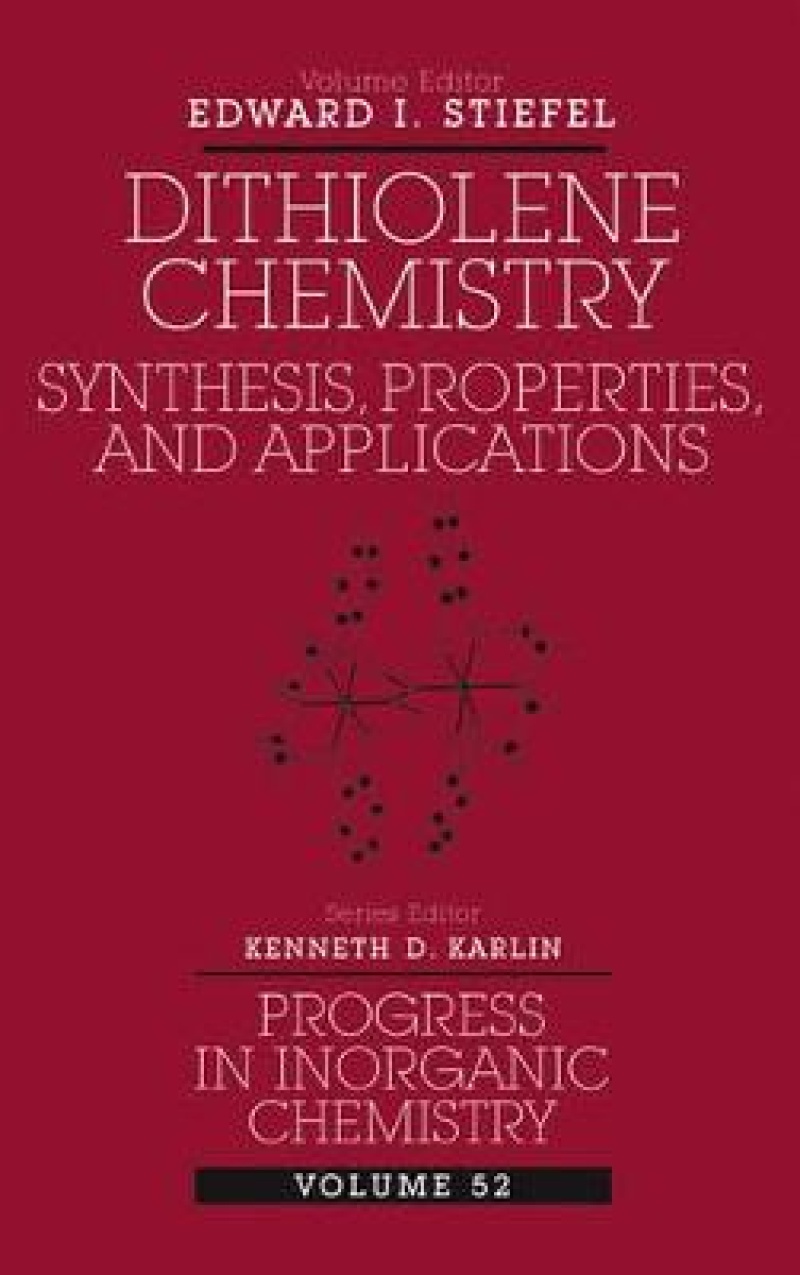"…a valuable contribution to the literature…the editor should be congratulated upon producing it to such a high standard. I recommend it unreservedly…" (<i>Angewandte Chemie</i>, December 17, 2004) <p>"…a balanced and comprehensive treatment of incontestable currency and utility…a primary, and possibly indispensable, resource." (<i>Journal of the American Chemical Society</i>, August 11, 2004)</p> <p>“…an extremely useful addition…” (<i>Applied Organometallic Chemistry</i>, Vol 18, No 8, August 2004)</p>
Chapter 2: Structures and Structural Trends in Homoleptic Dithiolene Complexes (C. L. Beswick, J. M. Schulman, and E. I. Stiefel).
Chapter 3: The Electronic Structure and Spectroscopy of Metallo-Dithiolene Complexes (M. L. Kirk, R. L. McNaughton, and M. E. Helton).
Chapter 4: Vibrational Spectra of Dithiolene Complexes (M. K. Johnson).
Chapter 5: Electrochemical and Chemical Reactivity of Dithiolene Complexes (K. Wang).
Chapter 6: Luminescence and Photochemistry of Metal Dithiolene Complexes (S. D. Cummings and R. Eisenberg).
Chapter 7: Metal Dithiolene Complexes in Detection: Past, Present, and Future (K. A. Van Houten and R. S. Pilato).
Chapter 8: Solid-State Properties (Electronic, Magnetic, Optical) of Dithiolene Complex-Based Compunds (C. Faulmann and P. Cassoux).
Chapter 9: Dithiolenes in Biology (S. J. N. Burgmayer).
Chapter 10: Chemical Analogues of the Catalytic Centers of Molybdenum and Tungsten Ditholene-Containing Enzymes (J. McMaster, J. M. Tunney, and C. D. Garner).
Chapter 11: Dithiolenes in More Complex Ligands (D. Sellmann and J. Sutter).
Subject Index.
Cumulative Index, Volumes 1–52.
Dithiolenes are sulfur-containing ligands whose complexes with transition metals represent a growing area of interest in chemistry. Recent discoveries of dithiolene complexes include magnetic materials, superconductors, nonlinear optical materials, luminescent sensors, and enzyme catalytic centers, which promise a variety of important applications.
Dithiolene Chemistry: Synthesis, Properties, and Applications is the first book devoted solely to dithiolene complexes, covering both their noteworthy properties and their potential applications. Edited by the winner of the 2000 American Chemical Society Award in Inorganic Chemistry, Edward Stiefel, Dithiolene Chemistry features a selection of significant, up-to-date reviews by internationally recognized researchers. Topics include:
- Synthesis of ligands and complexes
- Structures and structural trends in dithiolene complexes
- Spectroscopic and electronic structural properties
- Chemical and electrochemical reactivity
- Luminescence and photochemistry of metal-dithiolene complexes
- Dithiolene complexes in detection
- Solid-state properties (electronic, magnetic, optical) of materials based on dithiolene complexes
- Dithiolenes in biology
Dithiolene Chemistry is Volume 52 of the Progress in Inorganic Chemistry series, which provides a forum for critical, authoritative evaluations of advances in every area of the discipline. This volume continues the successful tradition of the series by elucidating the rapidly expanding study of dithiolenes, which have applications in many areas of chemistry. Advanced students and academic and industry professionals working in inorganic chemistry, materials science, physics, sensors, and the biosciences will all find in Dithiolene Chemistry a much-needed, up-to-date resource for this important area of chemistry.
—Dr. Marc Walters, New York University, Department of Chemistry
"This book would serve an important need."
—Dr. Stephen Koch, SUNY Stony Brook, Chemistry Department
"Dithiolene metal complexes have a history going back to the 1960's (at least). But, interest in such compounds faded by the seventies. However, there has been a major resurgence, just in the last very few years, and a number of research groups have found exciting new properties (i.e., photochemistry, luminescence), applications as sensors and new materials of industrial interest. Moreover, very recent (in the last five years, or less) biochemical insights have revealed that dithiolene-metal complexes exist in nature, in certain enzyme active sites. Thus, a segment of the biochemical and (bio)inorganic chem istry community is currently devoting considerable attention to inorganic synthetic, theoretical and other aspects of dithiolene coordination chemistry."
—Dr. Kenneth D. Karlin, Editor of Progress in Inorganic Chemistry, and Chemistry Professor at John Hopkins University
"Overall, I am quite enthusiastic about the proposed book on dithiolenes. This is an active research area, and I have long been curious that there is not monograph on the subject."
—Dr. T.B. Rauchfuss, University of Illinois, Urbana-Champaign
